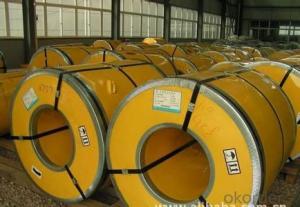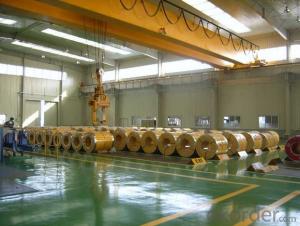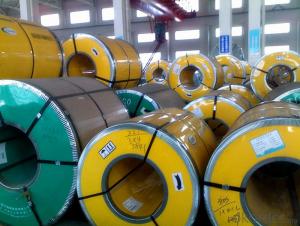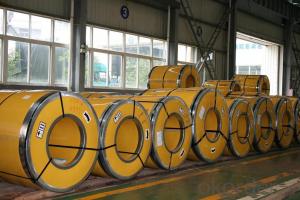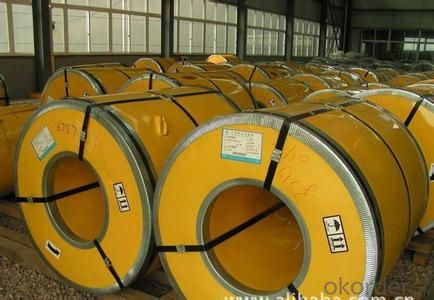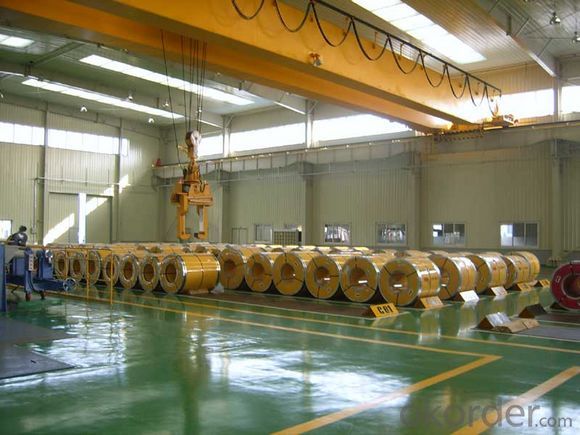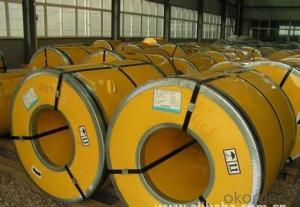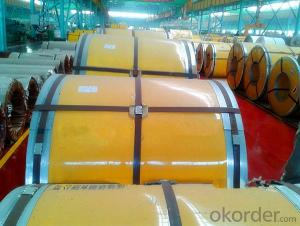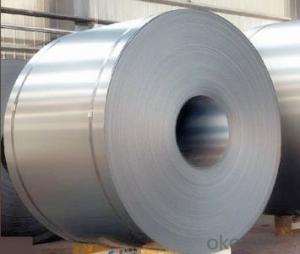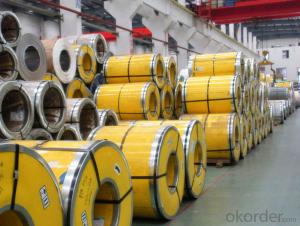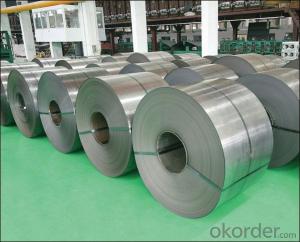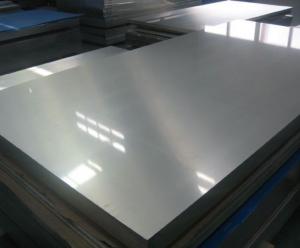Stainless Steel Coil Cold Rolled 201 Half Hard Surface No.2E with Best Quality
- Loading Port:
- Shanghai
- Payment Terms:
- TT OR LC
- Min Order Qty:
- 20 m.t.
- Supply Capability:
- 5000 m.t./month
OKorder Service Pledge
OKorder Financial Service
You Might Also Like
Specification
1. Structure of Stainless Steel Coil Cold Rolled 201 Descriptions
Stainless Steel 201 is a new kind of Austenite stainless steel by used Mn, N replace Ni.
The steel has good corrosion resistance and hot / cold processing performance, instead
of 304 stainless steel products for used in the not high of corrosive environment, such as
indoor, inland city outdoor etc.
2. Main Features of the Stainless Steel Coil Cold Rolled 201
Product name: Stainless Steel Coil Cold Rolled 201
Thickness: 0.2mm to 1.5mm
Technical: Cold Rolled
Width: 10mm to 1240mm
Type: 200 Series
Length: As customer's requested
Standard: JIS, SUS, AISI, ASTM
Grade: 201-J1, 201-J4, AISI201, AISI202…
Finish: BA, 2B, 8K, NO.3, NO.4, HL…
MOQ: 25 Metric Tons
Hardness: Low Hard(190 HV Max); Half Hard(240-280HV); Full Hard(42-60 HRC)
Ship Term: FOB any port, China or CFR Destination port
Delivery Time: 15 to 20 day after the receive the deposit or 100%LC
Payment Terms: TT 30% for deposit, Balance against the copy of B/L, or 100%LC
Packaging: By wooden pallet, wooden case or according to customer's request
3. Stainless Steel Coil Cold Rolled 201 Images
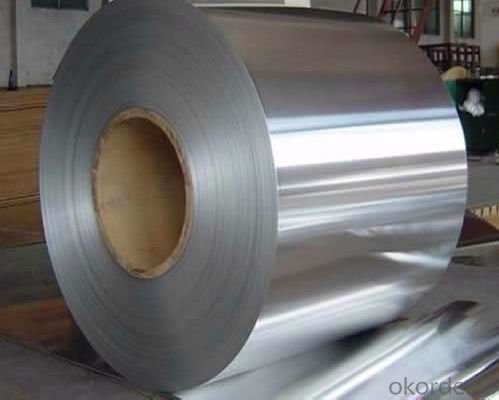
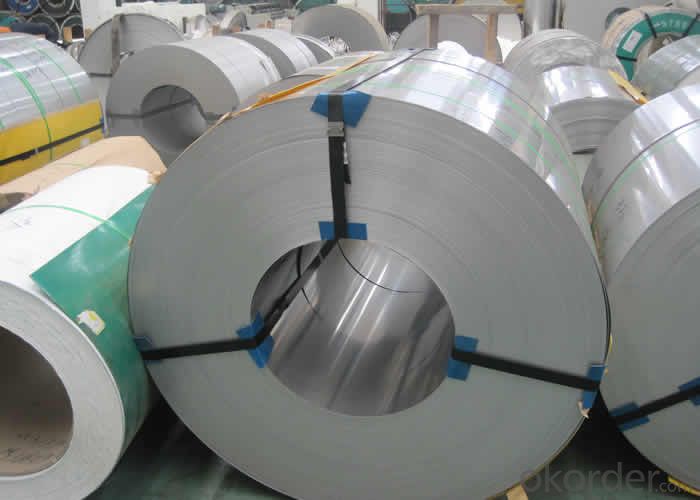
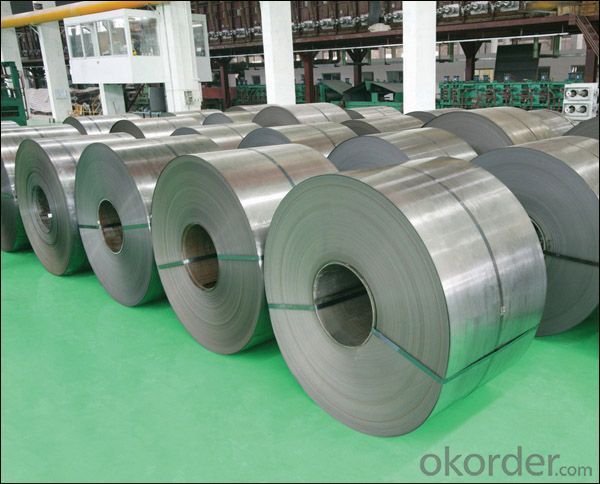
4. Stainless Steel Coil Cold Rolled 201 Specifications
Stainless Steel 200 Series Chemicals Contrast (wt. %) | ||||||||
Chemicals | C | Si | Mn | Cr | Ni | N | Other | |
205 | 0.12-0.25 | ≤0.75 | 14.0-15.0 | 16.5-18.0 | 1.0-1.75 | 0.32-0.4 | ||
JIS, | 201 | ≤0.15 | ≤1.0 | 5.5-7.5 | 16.0-18.0 | 3.5-5.5 | ≤0.25 | - |
201L | ≤0.03 | ≤0.75 | 5.5-7.5 | 16.0-18.0 | 3.5-5.5 | ≤0.25 | - | |
202 | ≤0.15 | ≤1.0 | 7.5-10.0 | 17.0-19.0 | 4.0-6.0 | ≤0.25 | - | |
201LN | ≤0.03 | ≤0.75 | 6.4-7.5 | 16.0-17.5 | 4.0-5.5 | 0.1-0.25 | Cu≤1.0 | |
India | 201-J1 | ≤0.08 | ≤0.75 | 7.0-8.0 | 15.0-17.0 | 4.0-5.0 | ≤0.1 | Cu≤1.5 |
201-J3 | ≤0.08 | ≤0.75 | 9.0-10.5 | 14.0-16.0 | 2.0-3.0 | ≤0.15 | Cu≤2.0 | |
201-J4 | ≤0.10 | ≤0.75 | 8.5-10.0 | 15.0-16.0 | ≤1.2 | ≤0.2 | Cu≤2.0 | |
America | 204 | ≤0.03 | ≤1.0 | 7.0-9.0 | 15.0-17.0 | 1.5-3.0 | 0.15-0.3 | (Cu) |
H400 | ≤0.10 | ≤1.0 | 6.0-9.0 | 17.0-19.5 | ≤3.5 | ≤0.3 | - | |
Japan | YUS130S | 0.09 | 0.5 | 11.0 | 18.0 | 6.5 | 0.35 | - |
NTK S-4 | 0.17 | 0.43 | 14.7 | 17.7 | 1.3 | 0.35 | - | |
NM15M | 0.08 | 0.8 | 14.5 | 17.0 | 4.3 | 0.33 | - | |
Europe America | 219 | ≤0.04 | ≤0.75 | 8.0-10.0 | 19.0-21.5 | 5.5-7.5 | 0.15-0.4 | - |
Cromanite | ≤0.08 | ≤1.0 | 9.5-11.0 | 18.0-20.0 | ≤1.0 | 0.4-0.6 | - | |
201 Surface | Characteristic and Application of Stainless Steel Coil Cold Rolled 201 |
2B | The surface brightness and flatness of 2B is better than 2D then through a special surface treatment to improve its mechanical properties,2B could nearly Satisfy comprehensive uses |
No.4 | Polished with abrasive belt of grit#150#180, have better brightness with discontinuous coarse stria, but thinner than NO.3, are used as bathtub buildings inner and electrical appliances kitchen utensils and food processing. |
BA | Cold rolled, bright annealed and skin-passed, the product have excellent brightness like mirror kitchen apparatus, etc. |
8K | The product have excellent brightness and prefer bright can be the mirror. |
5. FAQ of Stainless Steel Coil Cold Rolled 201
Q: Are you factory or trader?
A: We certainly are stainless steel manufacturer and have processing plant.
Q: Can you provide mill test certificate?
A: Yes! Mill test certificate for both hot rolled raw material coils and cold rolled coils are
available.
Q: Can you make DDQ (Deep drawing quality)?
A: Yes. Our material has been widely used for producing stainless steel pots and stainles
s steel sinks, which have strict request for good deep drawing quality.
Q: How to visit your factory?
A: Most of the main cities in the world have flight to Beijing; you can take flight to Beijing
first, then we will lead you to our Wuxi mills.
Q: How about your company?
A world class manufacturer & supplier of castings forging in stainless steel, is one of the
large-scale professional investment casting production bases in China, consisting of both
casting foundry forging and machining factory. Annually more than 90000 tons Precision
casting and forging parts are exported to markets in Europe, America and Japan. OEM
casting and forging service are available, all according to customer’s requirements.
Q: How to guarantee the quality of the products?
A: We have established the international advanced quality management system,every
link from raw material to final product we have strict quality test; We resolutely put an end
to unqualified products flowing into the market. At the same time, we will provide
necessary follow-up service assurance.
Q: How is the packaging and delivery?
A: Standard export packing (Coil: waterproof paper + protective steel ring; Circle: wooden
box), or as your requirement and the delivery term is based on the project.
Q: How long can we receive the product after purchase?
A: In the purchase of product within 20 working days, we will arrange the factory delivery
as soon as possible. The specific time of receiving is related to the state and position of
customers. Commonly 20 to 40 working days can be served.
- Q: Can stainless steel strips be painted?
- Yes, stainless steel strips can be painted. However, it is important to note that stainless steel has a non-porous surface which makes it difficult for paint to adhere properly. To ensure a successful paint job, it is recommended to follow a few steps: 1. Clean the surface: Thoroughly clean the stainless steel strips to remove any dirt, grease, or other contaminants. Use a mild detergent and water, and then rinse and dry the strips completely. 2. Sand the surface: Gently sand the stainless steel strips using fine-grit sandpaper. This will create a rougher surface for the paint to adhere to. Be careful not to damage or scratch the stainless steel while sanding. 3. Apply a primer: Apply a primer specifically designed for metal surfaces. This will help the paint adhere better and provide a smooth base for the topcoat. Make sure to follow the manufacturer's instructions for application and drying time. 4. Paint the strips: Once the primer is dry, apply a high-quality paint suitable for metal surfaces. It is recommended to use a paint that is specifically formulated for stainless steel to ensure better adhesion and durability. Apply the paint using a brush or sprayer, following the manufacturer's instructions for application and drying time. 5. Allow proper drying and curing: Give the painted stainless steel strips enough time to dry and cure fully. This will ensure that the paint adheres properly and provides a long-lasting finish. It is important to note that painted stainless steel strips may require periodic maintenance and touch-ups to maintain their appearance and protect them from corrosion.
- Q: What is the thickness range for stainless steel strips?
- The thickness range for stainless steel strips can vary depending on the specific grade and application. However, generally speaking, stainless steel strips can be found in thicknesses ranging from 0.0015 inches (0.0381 mm) to 0.125 inches (3.175 mm). This range allows for versatility in various industries, such as automotive, aerospace, construction, and manufacturing, where stainless steel strips are commonly used.
- Q: Can stainless steel strips be used in heat exchangers?
- Heat exchangers can indeed utilize stainless steel strips. Stainless steel is a favored option for heat exchangers because of its remarkable resistance to corrosion, ability to withstand high temperatures, and durability. It can endure the challenging operating conditions and thermal fluctuations frequently encountered in heat exchanger applications. Furthermore, the sleek surface of stainless steel strips aids in reducing fouling and promoting efficient heat transfer. Moreover, stainless steel boasts commendable mechanical properties, rendering it appropriate for different types of heat exchangers, including shell and tube, plate, and finned heat exchangers.
- Q: Can stainless steel strips be used in the food processing equipment industry?
- Stainless steel strips find extensive use in the food processing equipment industry. This is because stainless steel possesses numerous advantageous qualities, rendering it a favored choice in this sector. Its resistance to corrosion is of utmost importance in an environment where food and liquids are consistently present. Moreover, stainless steel is both hygienic and easy to clean, making it ideal for equipment that comes into contact with food. Furthermore, stainless steel's exceptional strength and durability enable the equipment to endure the rigorous demands of the food processing industry. Consequently, stainless steel strips are widely employed in the production of food processing equipment, including conveyors, mixers, slicing machines, and food storage containers.
- Q: How are stainless steel strips made?
- The production of stainless steel strips involves a technique called cold rolling, wherein a stainless steel coil is passed through a set of rollers at room temperature. This action progressively reduces the thickness and increases the length of the coil. To begin, the stainless steel coil is unwound and cleaned to eliminate any dirt or impurities. Subsequently, it is subjected to a series of rolling mills where the thickness is gradually decreased. These mills consist of two or more rollers that apply pressure to the metal, causing it to elongate and become thinner. This process is repeated until the desired thickness is achieved. As the stainless steel strip becomes thinner, it becomes more rigid and challenging to handle. To counteract this issue, annealing is conducted at specific intervals during the rolling process. Annealing involves heating the strip to high temperatures and slowly allowing it to cool. This procedure helps alleviate internal stresses and enhance the strip's ductility. Following the cold rolling and annealing stages, the stainless steel strip may undergo additional treatments such as descaling, pickling, and passivating. Descaling eliminates any scales or oxides that may have formed on the strip's surface during rolling. Pickling involves treating the strip with an acid solution to eliminate any remaining impurities. Passivation is the final step, in which a thin, protective oxide layer is formed on the surface of the stainless steel, enhancing its corrosion resistance. Once all of these processes are completed, the stainless steel strip is cut to the desired length and packaged for shipment or further processing. Its exceptional strength, durability, and resistance to corrosion make it suitable for a wide range of applications, including automotive components, kitchen appliances, construction materials, and electronic devices.
- Q: Can stainless steel strips be formed into coils or rolls?
- Yes, stainless steel strips can be formed into coils or rolls. The flexibility and ductility of stainless steel allow it to be easily shaped and rolled into various coil or roll forms for different applications.
- Q: Are 111 stainless steel strips suitable for electrical conductivity applications?
- No, 111 stainless steel strips are not suitable for electrical conductivity applications.
- Q: How do stainless steel strips perform in high-temperature steam?
- Stainless steel strips are known for their excellent performance in high-temperature steam environments. Due to their unique composition, stainless steel strips possess high corrosion resistance, even when exposed to aggressive steam conditions. The chromium content in stainless steel forms a protective layer of chromium oxide on the surface of the strips, which acts as a barrier against corrosion and prevents the material from reacting with the steam. This protective layer is stable even at high temperatures, ensuring the stainless steel strips maintain their integrity and performance in steam environments. Additionally, stainless steel strips have high strength and toughness, allowing them to withstand the mechanical stresses and pressures associated with high-temperature steam applications. Overall, stainless steel strips are a reliable and durable choice for use in high-temperature steam environments, providing long-lasting performance and corrosion resistance.
- Q: Are stainless steel strips resistant to galvanic corrosion?
- Yes, stainless steel strips are generally resistant to galvanic corrosion due to their inherent properties such as high chromium content, which forms a protective layer on the surface. This layer acts as a barrier against galvanic reactions and prevents the strip from corroding when in contact with dissimilar metals. However, in certain aggressive environments or under specific conditions, some forms of stainless steel may still experience galvanic corrosion.
- Q: Are stainless steel strips suitable for furnace parts?
- Indeed, furnace parts find stainless steel strips to be highly suitable. Renowned for its remarkable resistance to corrosion, heat, and oxidation, stainless steel emerges as an impeccable material for furnace components that endure extreme temperatures. These strips boast exceptional strength and durability, guaranteeing the endurance of furnace parts. Moreover, stainless steel's non-reactive properties render it compatible with diverse types of furnaces, spanning industrial, commercial, and residential applications. All in all, stainless steel strips stand as a dependable and effective option for furnace parts.
Send your message to us
Stainless Steel Coil Cold Rolled 201 Half Hard Surface No.2E with Best Quality
- Loading Port:
- Shanghai
- Payment Terms:
- TT OR LC
- Min Order Qty:
- 20 m.t.
- Supply Capability:
- 5000 m.t./month
OKorder Service Pledge
OKorder Financial Service
Similar products
Hot products
Hot Searches
Related keywords
